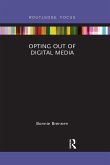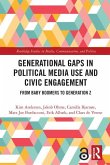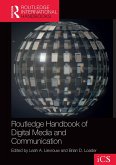This second edition furthers conversations about the ongoing society-wide and worldwide digitalization of human communication.
Reviewing the long lines in the history of media and communication - from writing via printing and broadcasting to computing - the book lays out three general types of media: the human body enabling face-to-face communication here and now; the technically reproduced means of mass communication across space and time; and the digital technologies integrating one-to-one, one-to-many, as well as many-to-many interactions. All these communicative practices coexist in contemporary media environments. Across cultures, genders, and age groups, people go on communicating in the flesh, via wires, and over the air, as illustrated though case studies of mobile communication on mundane matters, and of climate change as a global challenge for human communication and coexistence.
The second edition includes:
Updated accounts of research and public debate on digital media and communicationAnalyses of current social media and an emerging internet of thingsSystematic presentations of digital as well as traditional empirical methodsDiscussion of the normative implications of digitalization, including the classic rights of information and communication, and a right not to be communicated about through surveillance
Interdisciplinary in scope to showcase the wide-reaching cultural consequences of media convergence, this book is ideal for advanced undergraduate students, graduate students, and scholars in the fields of media, communication, and cultural studies.
Reviewing the long lines in the history of media and communication - from writing via printing and broadcasting to computing - the book lays out three general types of media: the human body enabling face-to-face communication here and now; the technically reproduced means of mass communication across space and time; and the digital technologies integrating one-to-one, one-to-many, as well as many-to-many interactions. All these communicative practices coexist in contemporary media environments. Across cultures, genders, and age groups, people go on communicating in the flesh, via wires, and over the air, as illustrated though case studies of mobile communication on mundane matters, and of climate change as a global challenge for human communication and coexistence.
The second edition includes:
Updated accounts of research and public debate on digital media and communicationAnalyses of current social media and an emerging internet of thingsSystematic presentations of digital as well as traditional empirical methodsDiscussion of the normative implications of digitalization, including the classic rights of information and communication, and a right not to be communicated about through surveillance
Interdisciplinary in scope to showcase the wide-reaching cultural consequences of media convergence, this book is ideal for advanced undergraduate students, graduate students, and scholars in the fields of media, communication, and cultural studies.








